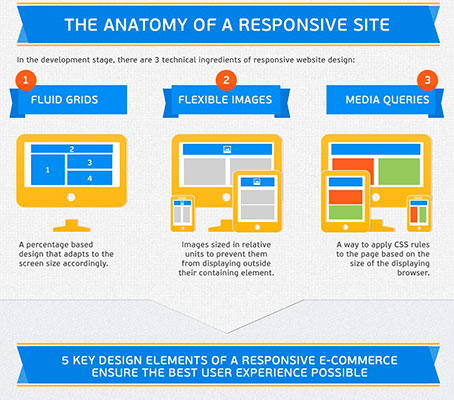Basic Aspects Of Web Design: Guidelines For Creating A User-Centric Site
Basic Aspects Of Web Design: Guidelines For Creating A User-Centric Site
Blog Article
Suggested Browsing By-Aguirre Neville
When it comes to web site design, making certain user-friendliness is crucial. From receptive layout to streamlined navigation, every component plays a vital role in creating a website that satisfies your target market's needs. But what regarding the better details that can make or break a user's searching experience? Stay tuned as increase search engine optimization uncover some often-overlooked suggestions that can raise your web site's functionality to the following level, making it truly stick out in the electronic landscape.
Value of Responsive Style
Responsive layout is a vital facet of contemporary website growth. Guaranteeing your internet site is responsive ways that it can adapt to different screen sizes and gadgets, offering a smooth experience for individuals.
With the enhancing use smartphones and tablet computers to access the internet, having a receptive style is important for getting to a broader audience. It helps in enhancing customer experience by making your internet site easy to navigate and read on any kind of tool.
Additionally, responsive design can favorably affect your online search engine rankings, as internet search engine like Google focus on mobile-friendly sites. By having a receptive style, you're also future-proofing your website, as new devices with differing display sizes continue to emerge.
Simplify Navigating Framework
To improve individual experience and assist in easy access to details on your website, simplifying the navigating framework is paramount. When developing your site, focus on developing a clear and user-friendly navigating food selection that aids site visitors find what they're looking for swiftly.
Limitation the number of food selection items to the basics, organizing relevant web pages together to avoid overwhelming individuals. Usage detailed labels that clearly indicate the web content of each page, making it much easier for customers to understand where each web link will certainly take them.
Consider applying dropdown menus for subcategories to prevent cluttering the primary navigating bar. In addition, include a search bar plainly on the page for users that prefer looking for specific info.
Focus on mobile responsiveness in your navigating layout to guarantee very easy access on all devices.
Optimize Page Load Speed
Improving page lots rate is crucial for retaining site visitors on your site. Slow-loading pages annoy individuals and can cause high bounce rates. To maximize mouse click the following web page , start by maximizing pictures. Press pictures without compromising high quality to minimize their data dimensions.
Additionally, allow browser caching to store regularly accessed sources locally, speeding up load times for returning visitors. Minify CSS, JavaScript, and HTML documents by getting rid of unnecessary personalities, comments, and formatting, boosting lots speed.
Think about using a content delivery network (CDN) to disperse your internet site's web content throughout multiple web servers worldwide, reducing latency for customers accessing your website from different locations. Finally, limit the use of third-party manuscripts and plugins, as they can dramatically affect lots times.
Conclusion
Finally, by incorporating receptive layout, simplifying navigation, and optimizing page lots speed, you can develop an user-friendly website that appeals to a wider target market and improves customer experience. These essential elements guarantee that visitors can easily access and browse your website throughout various devices, bring about enhanced interaction and satisfaction. By focusing on these vital aspects, you can construct a successful site that keeps users returning for even more.
